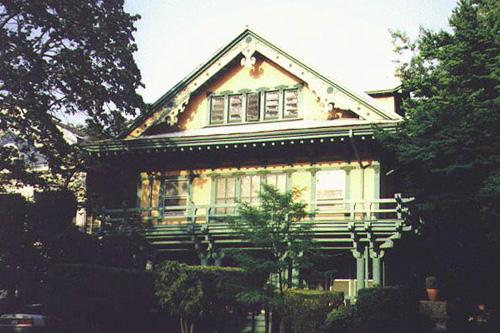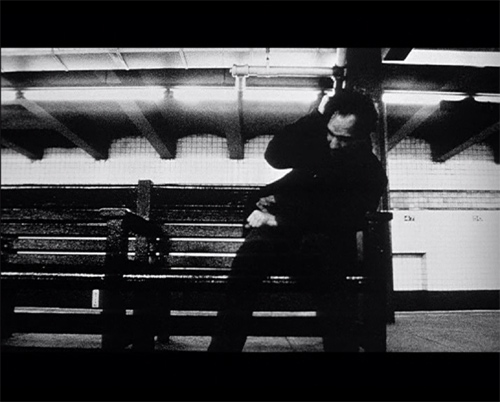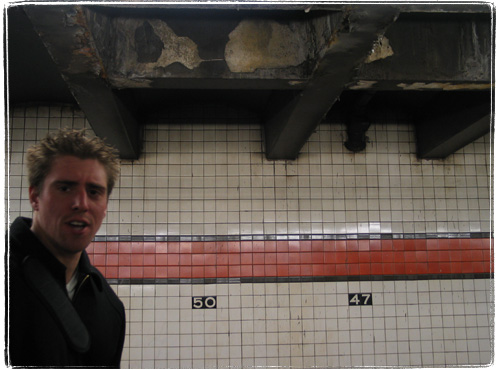October 2004 marks the 100th anniversary of the largest underground transit network in the world. Love it or hate it, if you’re a New Yorker, you can’t live without it: 3.5 million people ride the rails every day. The subway is as much a symbol of New York City as Central Park and the Statue of Liberty. Commemorating its centennial, this official publication presents an illustrated history of the architecture and design of the entire complex, from the interiors of the trains and the mosaic signage at the stations to the evolution of the token and the intricacy of the intertwined, rainbow-colored lines on the free, foldout map.
Produced with the New York City Transit Museum, Subway Style documents the aesthetic experience of the system through more than 250 exclusive pictures. The book includes newly commissioned color photographs of historic and contemporary station ornamentation as well as imagery from the Museum’s archives. The images span the full century, from the system’s inception in the early 1900s up to and including architectural renderings for the still-to-be-built Second Avenue line. AUTHOR BIO: The NEW YORK TRANSIT MUSEUM is one of only a handful of museums in the world dedicated to urban public transportation. The Museum’s collections of objects, documents, photographs, films, and historic rolling stock illustrate the story of mass transit’s critical role in the region’s economic and residential development since the beginning of the 20th century. The Transit Museum’s main facility is located in a decommissioned 1936 subway station in Brooklyn Heights, an ideal setting for the Museum’s 20 vintage subway and elevated cars, and wide-ranging educational programs for children and adults. A gallery annex in Grand Central Terminal presents changing exhibits relevant to the millions of commuters who use mass transit every day.
Photographer Andrew Garn has exhibited his work in galleries around New York City and across the country. His photographs are also held in numerous museum and private collections.
Along the Way: MTA Arts for Transit
Along the Way is a tour through New York’s underground museum of contemporary art, works commissioned by MTA Arts for Transit for the subway system and commuter rail lines. Vivid murals by Roy Lichtenstein and Romare Bearden convey the energy of Times Square, while Robert Wilson’s Coney Island Baby captures the festive spirit of the city’s playland. Currently underway are a photographic installation by Mike and Doug Starn at the new Fulton Street Transit Center and a large-scale ceramic wall drawing by Sol LeWitt at Columbus Circle.
Initiated in 1985, this collection of site-specific public art now encompasses more than 150 pieces in mosaic, terra-cotta, bronze, faceted glass, and mixed media. The program takes its cue from the original mandate that the subways be designed, constructed, and maintained with a view to the beauty of their appearance, as well as to their efficiency. Arts for Transit is committed to the preservation and restoration of the original ornament of the system and to commissioning new works that exemplify the principles of public art, relating directly to the places in which they are installed and the community around them.
Subway Sharks
I thought it was only crocodiles, but apparently sharks are a part of NYC Subway ecosystem.
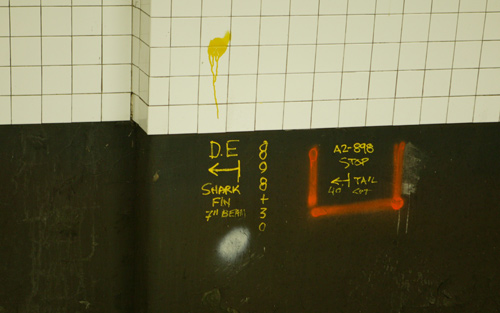
The Train that Sang, What You See is What You Say, and Subway Gymnastics
I haven’t written about the subways for a while. My commute changed somewhat and after years and years of seeing the peeling paint at the 47-50th street station, I am now instead being watched by the mosaic eyes of the Chambers Street station.
Those remind me of Sauron, his eyes and his “chambers of doom” (I think I encountered that particular expression in LOTR somewhere). By the way, MTA’s “If You See Something, Say Something” campaign has a new poster, that claims that last year 1,944 new yorkers saw something and said something. As my former co-worker Gur rightfully noted, this is a rather crappy PR move (and Gur knows a thing or two about PR). 1,944 does not seem like such a great turnout, especially considering that trains and bus stations were plastered with the ads imploring to IYSSSS. If I understand it correctly, those 1,944 people saying something did not foil 1,944 terrorist acts. If they did, it’s not very clear from the ad.
Besides the eye mosaics, my new subway station has another interesting feature. Some of the trains arriving and departing make a very strange, I would even say haunting sound. I’ll try to record it somehow and post it then. My guess is that the “singing” trains are the R142 on the IRT 2 line – they have induction motors that are said to produce a weird sound when accelerating and decelerating.
NYC Subway is a stage to many performers of various level of annoyance. I’ve seen many hip-hop acrobats and gymnasts who dance, and jump around to the headache aggravating boombox. The kids I recently encountered demonstrated a very interesting move. After an impressive, but not uncommon gymnastic routine in a semi-crowded train, one kid announced – “ladies and gentlemen, please do not try this at home.” The other kid took a running start, somersaulted, and then vaulted off the third team member into the air. He positioned himself parallel to the floor and reached the ceiling of the train car, slamming into it with a loud bang, then proceeded down for a controlled landing. I wish I recorded that on my Treo camera.
Subway Archeology
47-50th street station, Rockefeller Center, might be the portal to Top of the Rock, but it is still one of the most dilapidated stations, even by the IND standard. And Independent Subway System stations are some of the most dilapidated stations ever (thank you, Robert Moses).
Paint is peeling everywhere. On the railings it provides for an interesting history lesson. From what I can tell, the original color was a cheerful yellow, followed by white, followed by orange, followed by black, then white again, then a redder orange, then yellow again and finally black. Some of the colors might be primers, of course.

Japanese Brooklyn
Victorian Brooklyn is amazingly beautiful. In Victorian times skilled labour and land was cheaper than it is today and wealthy people were able to build really elaborate and architecturally significant residences rather than Mc Masions of today.
In a big lot of old postcards that I picked up on eBay I found this – a postcard featuring “The Japanese House, Flatbush, N. Y.” It looks like this wasn’t the only time this house was featured on a postcard: here’s another one.
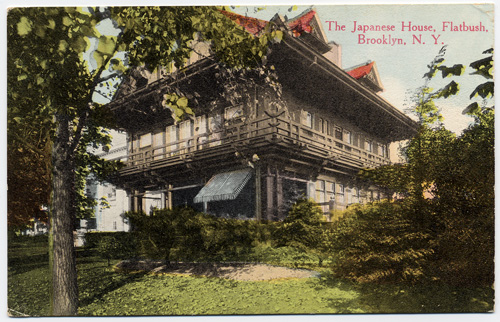
Don Wiss of the Brooklyn photo store photo fame graciously allowed me to use his picture of the Japanese House, which turned out to be
Frederick S. Kolle House at 131 Buckingham Road.
Here are Don’s notes, mostly gleaned from the AIA Guide to New York City.
I did a little bit more digging and found a New York Times article, which somehow is fully available.
The house was built by a developer in order to promote Prospect Park area.
Alvord advertised the house in Country Life in America in the summer of 1903, calling it ”a faithful reflection of the dainty Japanese art from which America is learning so much.” But the house was ”thoroughly practical,” the ad continued, with a ”porcelain Roman bathtub, also needle and shower baths,” and a 22-minute commute to Park Row. It was offered at $26,500.
According to this calculator that translates to somewhere between 600K if you use Consumer Price index to 12 million if you use the relative share of GDP. Stupid Zillow is showing values in $1 million range, which is of course very wrong. I suspect that the current value of the house is much closer to the GDP share range :)
The NYT article goes on to say that Dr. Kolle, the first owner of the house was a pioneering radiologist. It seems like he purchased the house on the cheap after the unusualness of it did not attract many bidders. Also, in 97 the house used to belong (and probably still does) to the director of Flatbush Development Corporation who bought the house in the 70s.
The following quote made me drool:
“Except for the kitchen, the ground floor interior of the Fischers’ house is completely intact, with dragon figures in the stained-glass windows, Japanese decorative detail around the fireplace and a definite feeling of thinness to the partitions — there are leaded glass windows between the sitting and dining rooms. The Fischers have furnished the house with an eclectic mix of furniture and artwork, from Belter to Bauhaus, as well as memorabilia from the Kolle family.”
Apparently the Flatbush Development corporation is holding a Victorian House Tour, that at least in 97 featured the Japanese House as one of the stops. I wonder if they still do – I’d love to see it.
Looking at the butt-ugly condos and renovation in McMansion syle that I see all over, I can’t help but think – will they build houses that are postcard-worthy again in Brooklyn?
I Think I Don’t Want To See Mr. Subways
Looking at the poster of Ms. Subways makes me think that using “Subways” instead of “Subway” is a little long in the tooth – almost nobody even remembers that there used to be IRT, BMT and IND.
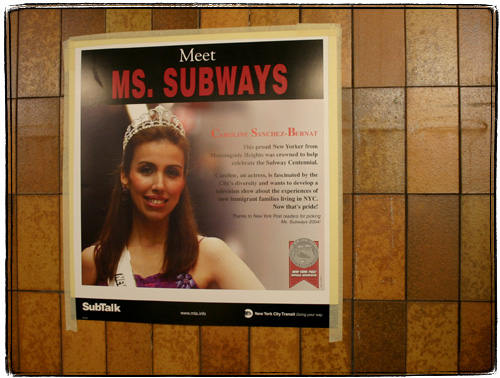
Happy Birthday Dear IRT!
Empire State Building is lighted Red/Gold/Red today. Handy ESB lighting schedule tells me that this is in honor of Subway Centennial. A better color would have been a rusty gray-brown, the color of steel dust that covers the tracks and most other subway surfaces, but I guess they don’t have lights like that, do they?
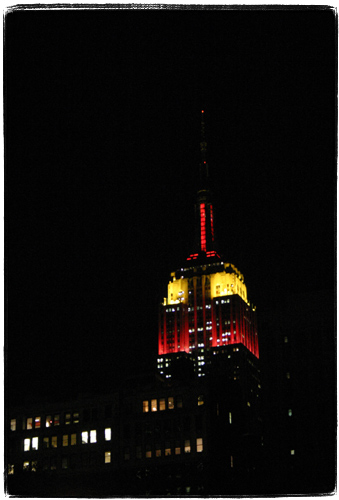
To celebrate Interborough Transit Corportation’s 100’s birthday I decided to try and sneak a peek at the fabled City Hall station, the one where Mayor Bloomberg and a bunch of bigwigs recreated Mayor McClellan’s ride 100 years ago. It’s nice to be NYC’s Mayor – you can fly NYPD helicopters and drive antique trains.
Unfortunately the restored City Hall station was not open for regular shmoes, but I tried the old trick – taking 6 train through the last stop. Number 6 loops through the old City Hall station without stopping. I asked the conductor to let me stay, but since it was around 8PM she said – “not at this time of night” and kicked me out. I went for a walk around City Hall and took this picture of the pretty entrance to the current City Hall station.
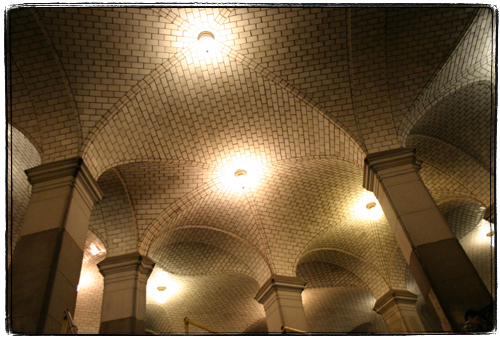
When I took the train back I saw the most upsetting sight – there was an intoxicated bum sleeping in a middle car with the conductor not paying any attention to him. He was holding an empty popcorn bag an there was small sea of popcorn and other rat attracting garbage around him. Apparently he went through the loop unharassed, although the old City Hall station was of no interest to him. I guess next time it would probably be a good idea to try asking a few conductors – maybe some are not as strict.
This is like living in Manhattan – Donald Trump in his tower, a bum in a box on church steps, a low income person in a housing project. Middle class not allowed.
On the bright side, tomorrow the special museum train will be making regular stops on the B/Q line between 10AM and 3PM. They call it “Catch me if you can“.
Holy Relevancy, Batman!
I put in Google Adsense ads ( aka Ads by Goooooogle) hoping that maybe they will compensate me for my almost daily Fair and Balanced newspaper, or maybe even cover the cost of my hosting. I am stoked – practically for the first time ever I’ve seen an ad for something that I could use. More than that, it’s an ad for something that I was desperately searching for and could not find:
NYC Subway Mosaic To Buy
Buy restoration mosaic like you see on the walls of the NYC Subway.
It is way better than I expected:
“Subway Mosaic Handmade Tile
This ceramic mosaic comes from a source that has supplied mosaic to a great deal of subway stations in the NYC Subway System. This is the real deal. The clay body is a frost-resistant stoneware body. The glazes are a combination of matte and glossy. You can have a copy of any station in the NYC Subway System made to any size you want. You can even customize the color, if you do not like the original glazes.”
And the prices are way reasonable – 18 x 28 (from what I understand this is a standard small IRT medallion size) is $285.00! I think my bathroom is going to get one of those.
The moral of the story – Google ads are worth paying attention to.
